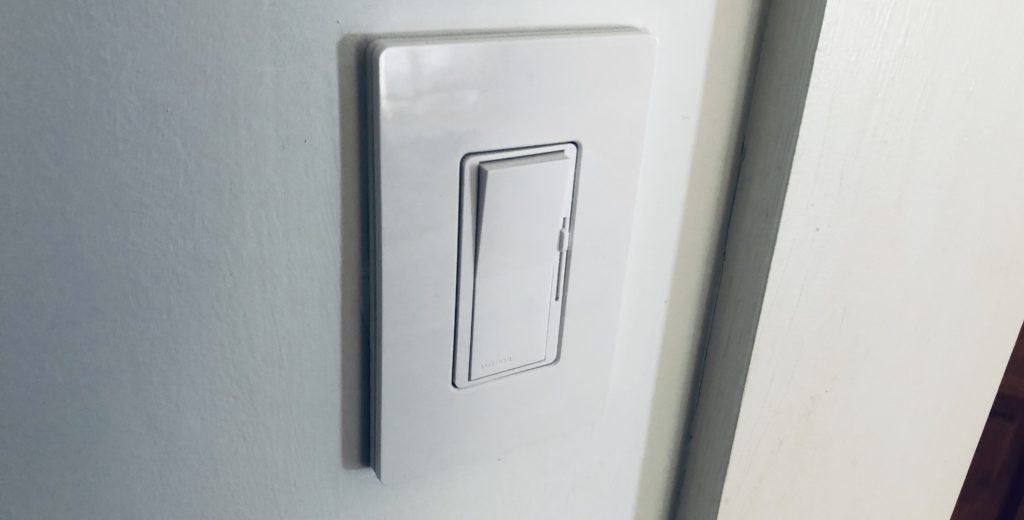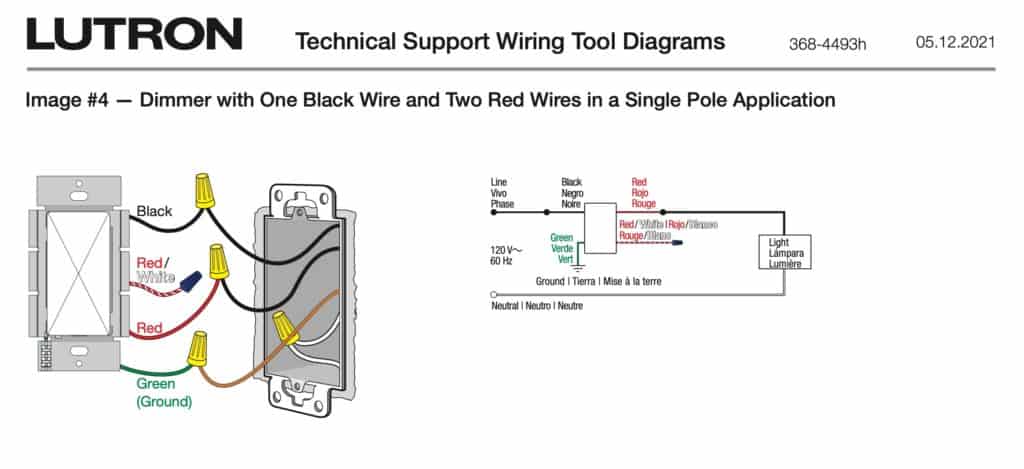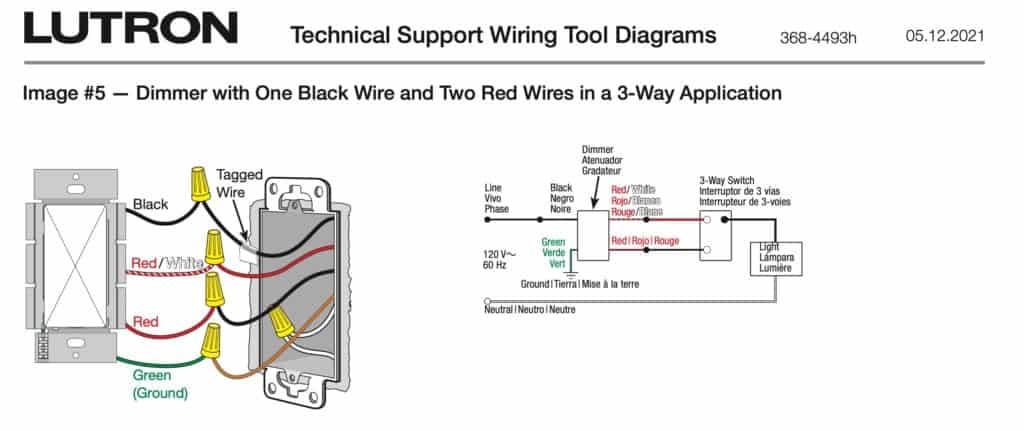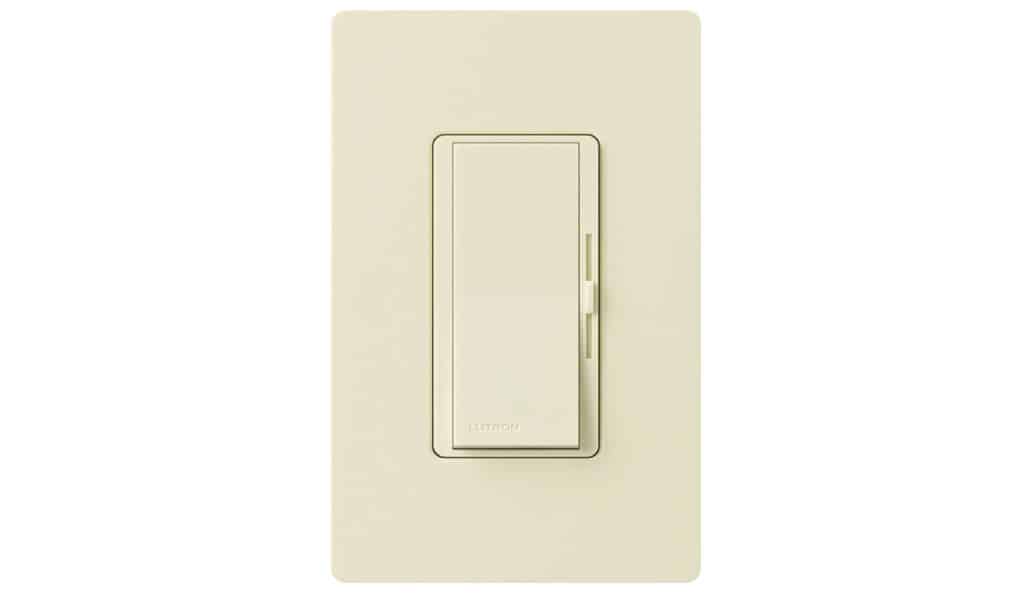If you are in the market for a new, non-smart dimmer for your lights (as in, it doesn’t work with a phone app), there are a ton of options… too many in fact. One good route is to go with a reasonably priced product from a top name in the space. That’s how I arrived at the Lutron Diva LED+ dimmer.
Finding The Right Diva LED+
Dimmers are difficult to tell apart, so I’ll be super explicit here. I purchased Diva C.L Dimmer Switch DVCL-153P, often sold as the “Lutron Diva LED+” with an extended model number of DVWCL-153PH-WH. It sells for about $27. It works with either 3-way or single-pole placements.
This same dimmer used to be called the CL (sometimes spelled “C·L”) but it’s identical to the LED+, which is simply the newer name.
I’ve bought and installed at least five of these dimmers in my home and have some thoughts about it.

What Makes A Good LED Light Dimmer?
A dimmer is type a light switch that not only turns light on/off, but also has some sort of way to control the brightness of the lights. This light power control — the dimmer function itself — is sometimes called a rheostat or potentiometer, but modern electronics are complex enough that your dimmer may not exactly be one of those things, even if it serves the same function.
The important thing to note is that older dimmers don’t play well with today’s LED bulbs. For example, old dimmers expected to handle lights that were running at 60W or even 100W, where a modern LED bulb usually uses 6W to 14W. Secondly, an incandescent bulb works fine is the power doesn’t have a perfect delivery, where an LED bulb is a type of electronic device which will flicker and buzz if the switch associated with it isn’t spot on.
The most consistent problem with old dimmers and new bulbs are:
- The LEDs will appear to flash or flicker
- The LED bulbs will buzz when the dimmer is at any power level aside from 100%
- Sets of LED bulbs won’t work unless one of the bulbs in the array is incandescent
- The dimming won’t work at all
- The dimming will only work down to a set level, stay 50%, after which the bulb will just turn off

Lutron LED+ Features
The LED+ is pretty simple device. It has a large, paddle-style on-off switch and a slider on the right side of the switch to adjust the level of brightness. It works in single-pole or three-way applications.
Importantly there is a setting on the back for adjusting the minimum power setting. This is useful for fully turning off LED lights which barely use any power so need fine grains controls here. Basically this prevents the last two issues mentioned above from happening. You are determining how much power is being deliver when the dimmer says it’s at, say, 25% power. Your LED bulbs might need a little more or less power to operate properly — too much power and the bulbs won’t dim; too little power and the bulbs might turn off when the dimmer is at the 50% mark.
The switch includes a plastic front plate for hiding the hardware behind when mounted in a wall.

The dimmer power itself is a bit hard to find — it’s hidden away on the right side of the on/off switch. It’s small and might be a little hard to operate if you don’t have perfect motor control of your hands or don’t work well with fine-grain knobs and dials. The good news is that the dial is hard to hit accidentally so you will pretty much always find the setting where you last left it.
The Diva LED+ has no little LED lights indicating the power setting, which means it doesn’t brighten the room at night, but also means it’s hard to find in the dark, which can be an issue for guests.
This model Diva don’t work with phone apps, don’t connect to your WiFi, and doesn’t have any remote control options.
The Diva LED+ is not to be used with fans. In fact a dimmer switch pretty much never the right choice for a ceiling fan.

Lutron Diva LED+ Thoughts
I used the LED+ to replace some older Lutron dimmers which were causing buzzing in my lights. These older dimmers had a little button on the side that had to be clicked multiple times in order to adjust the brightness and they didn’t always allow all the bulbs in my house to turn offer entirely.
So, basically, I had a house full of old, non-LED dimmers and I needed something new. I’ve always had good luck with Lutron products so this seemed like a good way to go.
The installation was very simple. I used Lutron’s directions and had no problem. In the past I’ve called their technically support line and gotten fast, helpful advice. It’s a huge perk of shopping with a quality brand like Lutron. The dimmer has black, red, red plus white, and green wires coming out of it, which will be a little confusing for some people, but it’s an easy installation and all the necessary parts are included.
The installation worked and the lights worked great as well. My dimmer works in the full range and goes from very little light to full brightness. I’m using GE Relax bulbs so the lights get nice and warm at the lowest levels and the room feels quite cozy.
The dimmer has no buzzing and has had no compatibility issues with the incandescent or LED bulbs I’ve tried.
The switch is nice and firm with a feeling of quality. I’m sure it’ll be less firm over time, but I’m enjoying the tactility of the switch. The dimmer slide is rather small so it can be easy to forget it’s there, but I don’t have a problem adjusting it. I like that the dimmer doesn’t have any lighting built in, as some of my other dimmers have tiny LED indicators that bother me.
This is a nice light switch for LED lights and I do recommend it.
Lutron Diva+ Wiring Diagram
Because these can be hard to find and can disappear over time, here are the Lutron wiring diagrams in case you are looking, or are curious about how the installation will be when you actually do it. These are direct from Lutron’s help section.
Single Pole Wiring Diagram

Three-Way Diagram

Of course, if you have any confusion with this or aren’t familiar with electricity work, you should call a licensed electrician near you and have them do the work. I was able to pull off this installation by myself each time, despite honestly not loving electrical work.
Pricing and Availability
The Lutron LED+ is widely available and should sell for about $28 online. Prices will fluctuate, and I’ve seen them sell for as low as $25 and up to $40, so shop around and see what you can do. If you are paying about $30 you’ll be getting a fair price.

